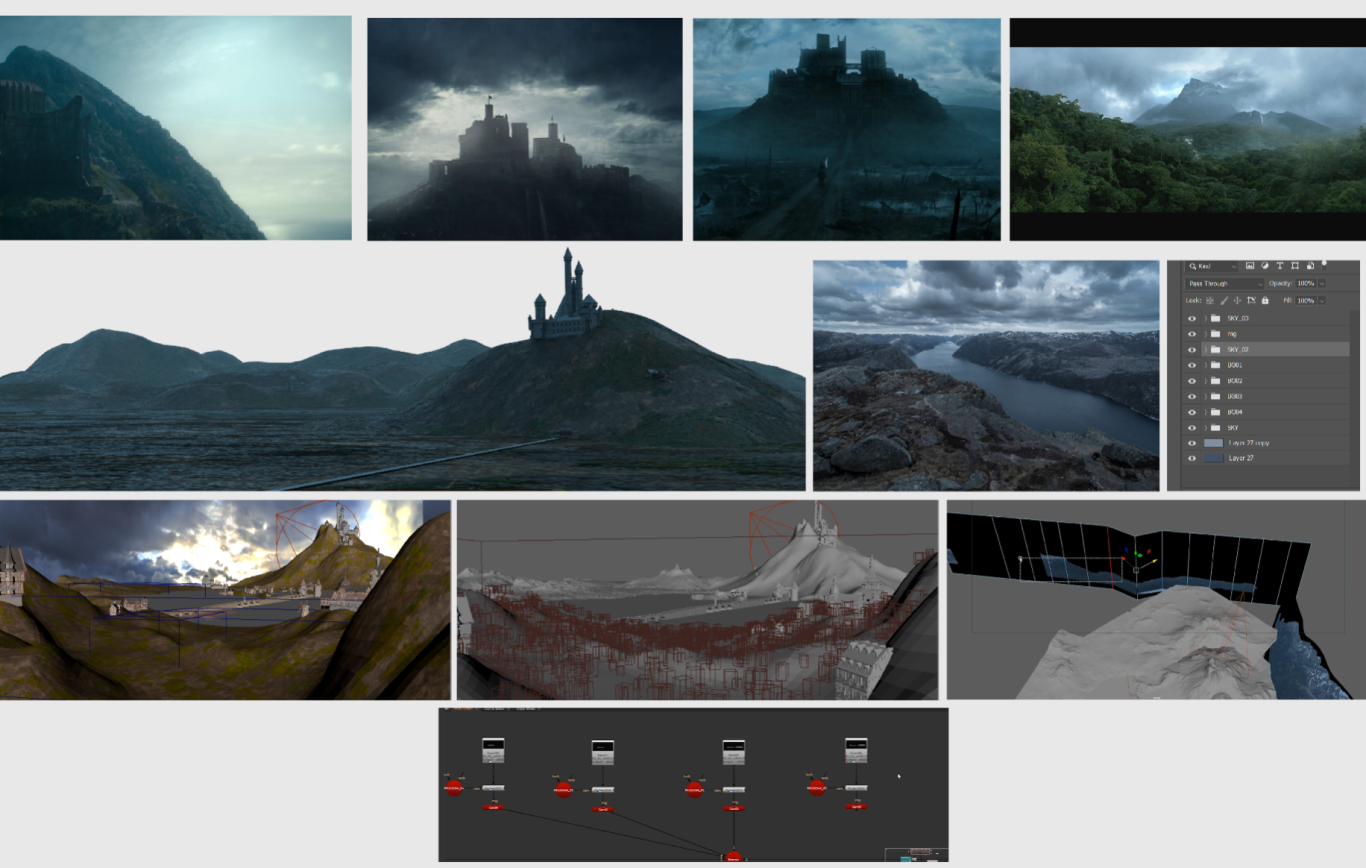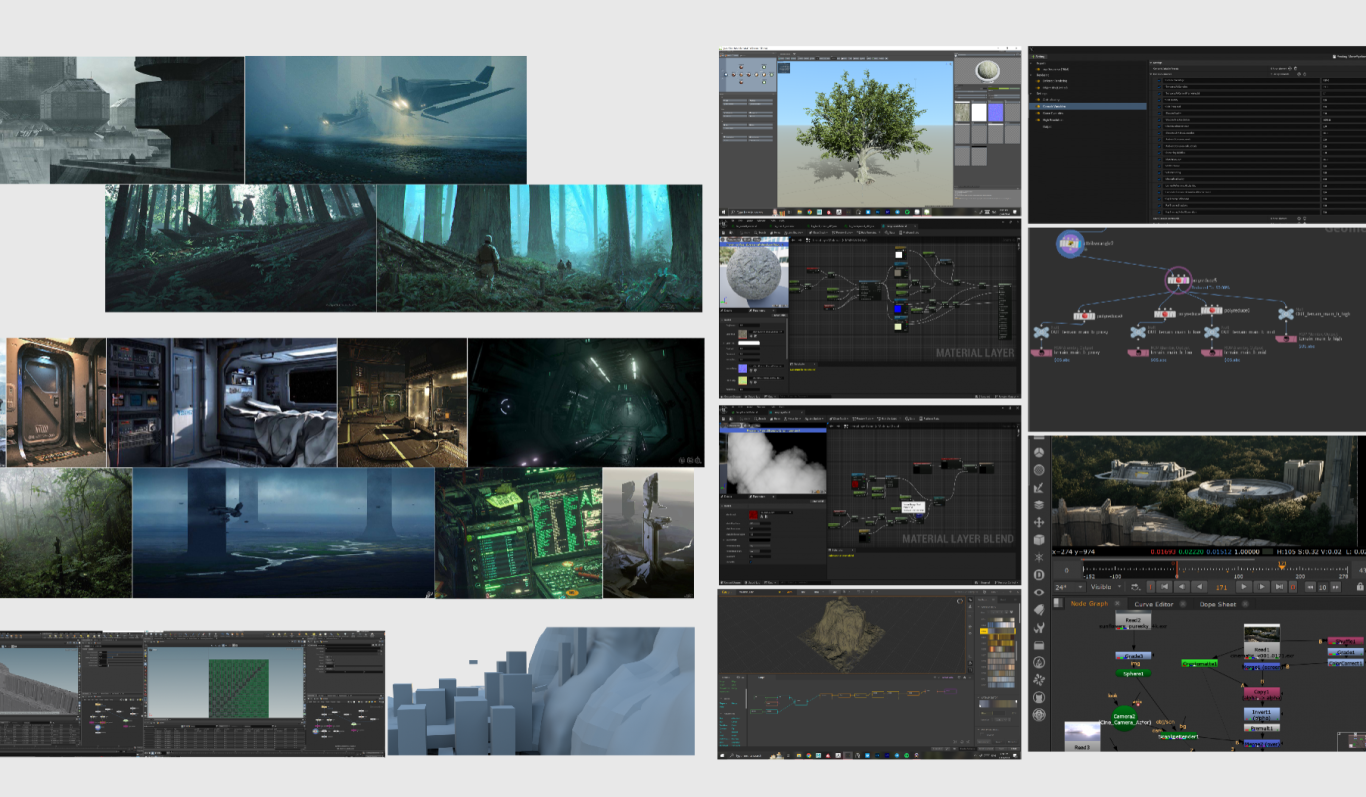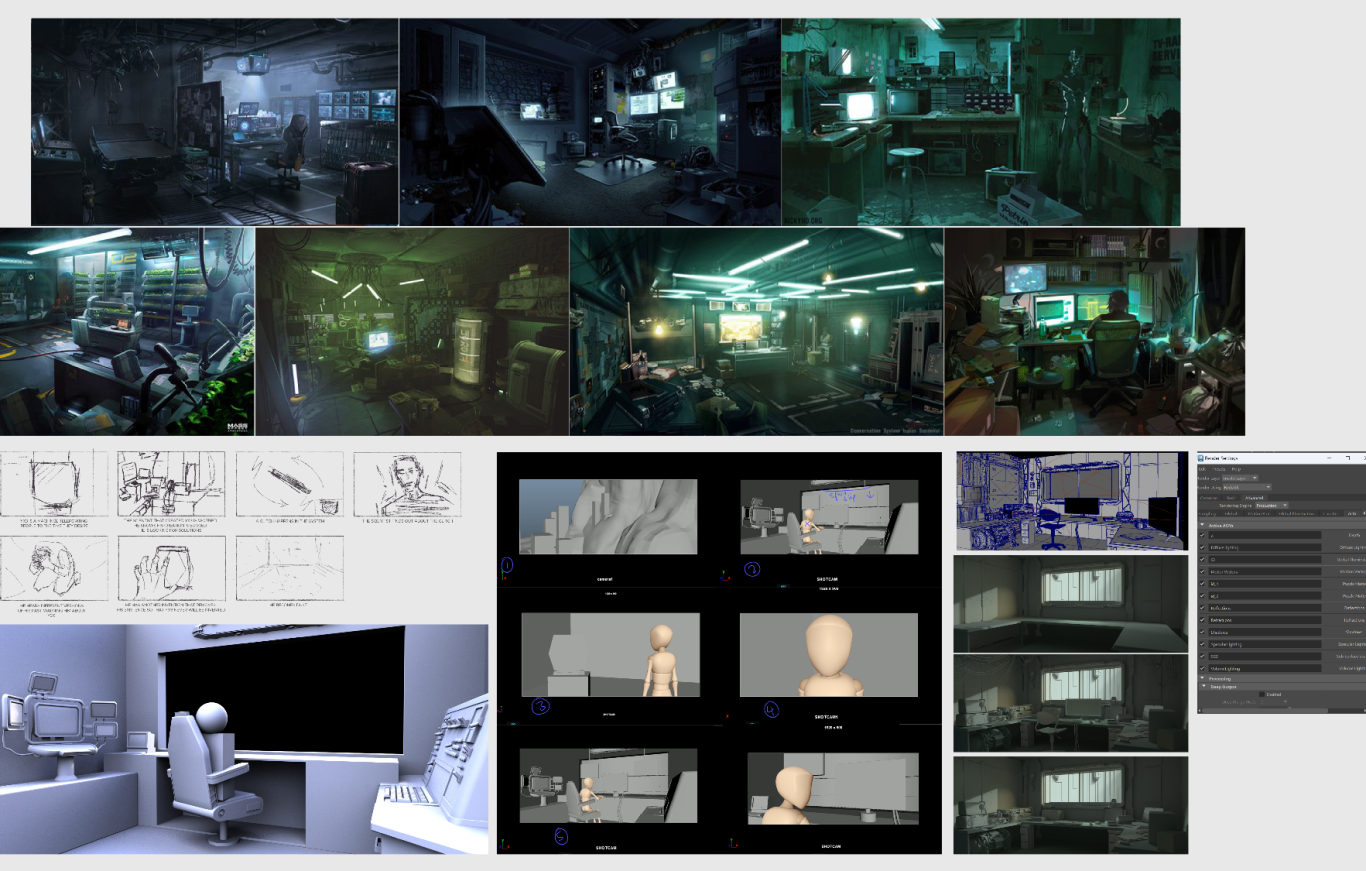
For this piece, I wanted to focus on improving various skills, but the most important ones were matte painting projections in Nuke, working with MASH in Maya to scatter trees, and using the ACES workflow.
I started by gathering references; I was aiming for a cold, moody, and foggy atmosphere, so Game of Thrones was a big inspiration. After selecting the right photographs to work with, I began modeling the basic terrains in Maya and created a simple camera animation to establish the scale of the world.
Next, I brought the terrains into World Machine to generate more detailed landscapes. I then imported them into ZBrush to create different resolution versions of the scene, so my laptop could handle the project more efficiently.
I modeled the trees in SpeedTree and scattered them using MASH in Maya, setting up different ecosystems. For the buildings, I used a Kitbash3D set and added lighting to the houses to enhance the mood of the scene.
I rendered the foreground and midground, and painted the background in Photoshop—this included the sky, clouds, and distant mountains. Afterward, I projected all the elements in Nuke. It was a bit tedious since it was my first time doing this kind of projection work, but it was a great learning experience.
Finally, I did some color grading and composited birds into the scene to add more life and motion.


For this piece, I wanted to create a polished, sci-fi-themed environment using Unreal Engine 5, as I’d been deeply focused on learning the engine throughout my Master’s. The goal was to create something cinematic and high-quality for my showreel, while also experimenting with a variety of tools and workflows.
The inspiration came from brutalist, futuristic architecture surrounded by forest environments;something grounded in nature but with a strong sci-fi identity. You'll see this reflected in the references I gathered.
The process began with previs in Maya, where I blocked out the layout and created the initial camera animation, since this was the establishing shot for my FMP. I aimed to polish this phase as much as possible to set a strong foundation.
From there:
I created terrains in Gaea, exported the heightmaps to Houdini for optimization, and then generated meshes which I brought into Unreal Engine.
I experimented with material layers, using custom setups based on the passes I got from Gaea, giving me more control over the look development.
I also modeled 7–8 tree variations in SpeedTree and manually painted the foliage in Unreal to get the natural feeling I wanted.
For the architectural element (the large entrance), I used a "Greeble" tool in Houdini, tweaking its parameters to design the structure, which I then textured in Substance Painter.
Lighting played a huge role; balancing real-time rendering with a cinematic look took a lot of iteration.
Finally, I rendered the animation in Unreal and brought the passes into Nuke, where I did a simple matte painting (replacing the sky) and some color grading to complete the piece.
This piece is another scene from my FMP, and ties into the overall narrative I had storyboarded early on. I had three core story ideas, and this shot emerged from one of them.
The previs was very simple; just rough cubes and shapes , and mainly focused on camera angles, composition, and flow. Once I had a layout I was happy with, I moved into developing the full environment.
The concept was a sci-fi lab belonging to a scientist, filled with notes, tech, and traces of memories. I was especially focused on storytelling through the environment; using the set dressing to reflect the character’s personality and history. Tiny details like the placement of papers, equipment, or lighting were intentional and part of building an emotional connection.
Technically:
Modeling was done in Maya, and texturing in Substance Painter.
I rendered the scene with Redshift, using AOVs for flexibility in compositing.
In Nuke, I did the final compositing and color grading, refining the mood and enhancing the emotional tone of the piece.
The main challenge; and the goal, was to make a visually cinematic environment that helped tell the story through lighting, composition, and props.
We need your consent to load the translations
We use a third-party service to translate the website content that may collect data about your activity. Please review the details in the privacy policy and accept the service to view the translations.